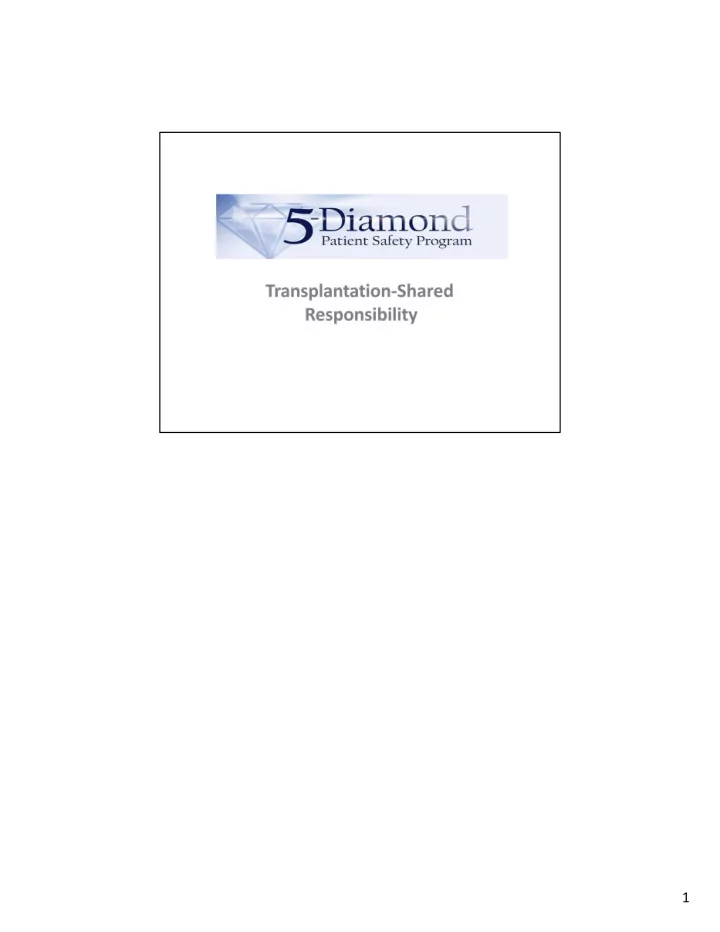

1
2
Transplantation is the preferred modality, and has many advantages and benefits over dialysis as a modality for the ESRD patient. Included in those advantages are a better survival rate and a better long term quality of life. If a patient is transplanted within the first six months of starting dialysis, as opposed to 5 years later, the outcome of survival increases. According to the USRDS 2015 report, living donor transplants function better than those of a deceased donor. Transplantation also allows patients to have a better long ‐ term quality life. With a less restrictive diet, patients report they have more energy, increased social involvement and an ability to think clearer. 3
The United Network for Organ Sharing or UNOS is a list/database for patients waiting for a kidney. The database provides secure information that facilitates organ donors to recipient matches. This process of organ sharing is available 24 hours a day, 365 days a year. In September 2016, UNOS listed 99,333 candidates waiting for a transplant. The list of patients waiting, far exceeds the number of patients receiving a kidney transplant. In 2013, only 17,878 kidney transplants were performed. In the US and territories there are over 226 transplant centers. 4
According to the Conditions for Coverage (CfC), each transplant center is responsible to provide selection and exclusion criteria. This criteria determines if the patient is suitable for transplant. The CfC also states that Interdisciplinary Team (IDT) is responsible to complete a comprehensive assessment of each patient and determine if the patient should or should not be referred for transplant. 5
The Conditions for Coverage (Cf) states that a plan of care must be developed and implemented for each patient, including transplantation as a modality. There is also additional documentation required depending on if the patient is a referral candidate or non ‐ referral candidate. If the patient is a non ‐ referral candidate, the plan of care must also state the reason for the non ‐ referral. 6
The dialysis facility also has responsibility in the transplant referral process. Prior to being listed for transplant, the referral patient will probably have many healthcare related tests, e.g., a colonoscopy, dental exam, and cardiac evaluation. It is important that the facility track and monitor the status of the required tests for each patient referred to a transplant center. Once the patient is listed for transplant, the facility usually draws and monitors the required monthly blood sample sent to the transplant center. This blood test must be kept up to date just in case an organ becomes available for transplant. 7
The facility is also responsible for communicating, with the transplant center, about any changes/illness or conditions that could lead to the patient being inactivated from the transplant list. Any of the conditions listed in the above slide (hospitalization, infection, transfusion, etc.) could prevent a patient from receiving a transplant. If a patient is stable the facility should follow up at least yearly and if unstable the follow ‐ up should be at least monthly. 8
Transplant center programs will need to meet with and evaluate the patient for many different reasons and concerns. The patient will likely undergo an assessment to confirm that they are medically stable to go through surgery, that they are psychologically prepared for transplantation, and that the family is willing to participate in the patient care. Many medical tests will be performed or scheduled and the patient will receive education from the transplant team. 9
10
Transplant center coordinators are assigned to each patient. They will guide them through the transplant evaluation process, educate the patient about the benefits and risks of transplant, be the contact person for the patient and the dialysis staff, and monitor the patient’s status on the transplant waiting list. 11
12
13
How to manage all of this? Develop a partnership with the Transplant Center and appoint a dialysis facility healthcare worker (HCW) as a Transplant Liaison who will: • Educate patients about transplantation • Educate staff about transplantation • Track transplant evaluation referrals • Track monthly laboratory samples • Communicate patient changes that may affect the wait list status to the transplant center 14
15
16
17
18
Recommend
More recommend